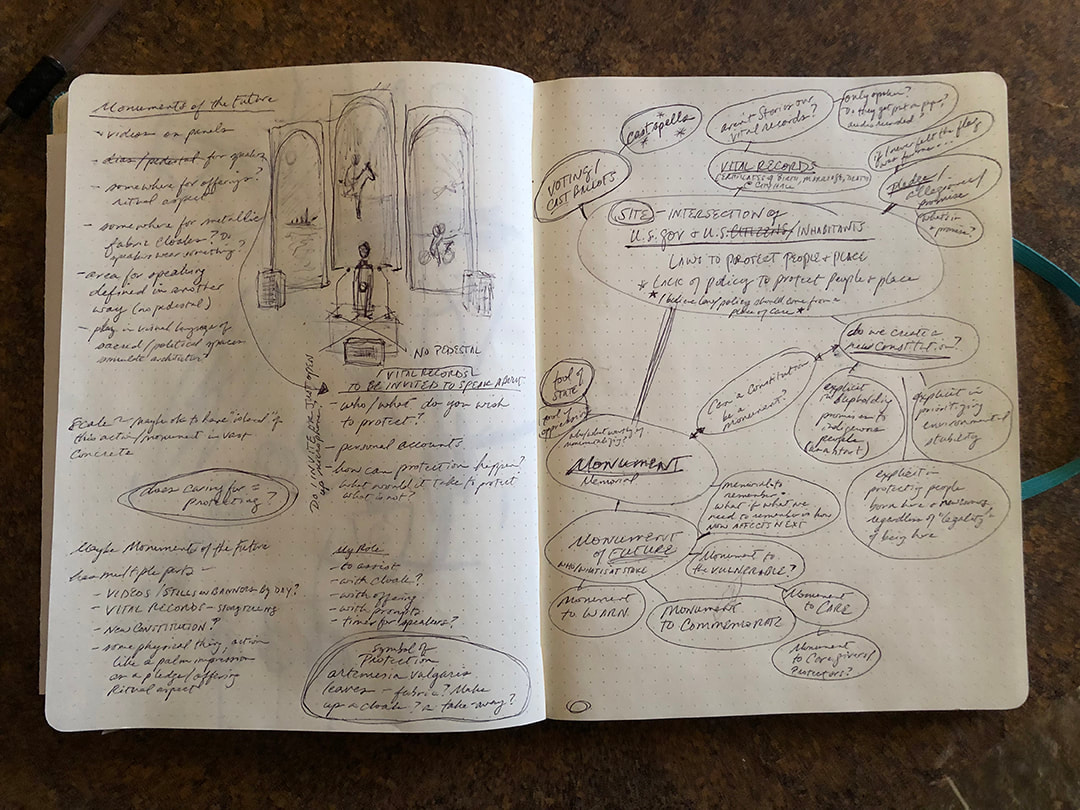Monuments of the Future
Protectors, healers
Monuments of the future
Honor those who care
Monuments of the future began as a vision. Days before the Supreme Court had overturned Roe v Wade, and I, like many people I knew, felt angry and helpless. The decision made clear that women and people born with female organs were not considered equal to men, and they had no rights to their bodies. I thought about the future my daughter has in this country. I thought about my nieces, my students. I thought about the much larger implications of stripping half the population of their bodily autonomy. I already knew how deeply interwoven sexism is in our culture, a culture that insists that “women’s work” in all forms is somehow less important.But on this middle-of-the-night waking, I saw my response unfolding. I would create a series of videos that highlighted people who did one aspect of “women’s work”—people who cared for others. I see these people as the ones we should be remembering as we make laws and policies.That fall, I enrolled in Krzysztof Wodiczko’s course, Monument/Action/Vision—the title drew me in as a sign. In this course, Krzystof and the class assistant Robert, provided us with readings, viewings, and discussions that contextualized what monuments are and how they function. Through interrogation and support, the project for Monuments of the Future deepened.
In Amber Imrie’s Embodying Process course, we delved into our lived experience and stories as methods of developing our work, and my peers encouraged me to think about these monuments in a serial fashion, with this first iteration as honoring caregivers. The haiku above, as one of the course assignments, helped me distill my ideas to the core of the project.What I’m presenting here is a clip of the videos I intend to create through the next few years. I will reach out to people who care for others—others being animals human and non, the land, cities, etc.And I will work with them to create a short video in which they are clad in metallic fabric and in a landscape significant to them.The videos will tilt from ground to sky and back again, resting briefly on the action at the horizon, and linking the caregivers to the earth and cosmos.Eventually this project will involve performative and participatory actions and events in sites meaningful to the project’s aim:in politically marked spaces andto reconsider who we protect and how we set up systems to do so.What would it mean if we created monuments that reminded us of the ones who care for others?What would it be if we created monuments that reminded us of what was at stake?
In Amber Imrie’s Embodying Process course, we delved into our lived experience and stories as methods of developing our work, and my peers encouraged me to think about these monuments in a serial fashion, with this first iteration as honoring caregivers. The haiku above, as one of the course assignments, helped me distill my ideas to the core of the project.What I’m presenting here is a clip of the videos I intend to create through the next few years. I will reach out to people who care for others—others being animals human and non, the land, cities, etc.And I will work with them to create a short video in which they are clad in metallic fabric and in a landscape significant to them.The videos will tilt from ground to sky and back again, resting briefly on the action at the horizon, and linking the caregivers to the earth and cosmos.Eventually this project will involve performative and participatory actions and events in sites meaningful to the project’s aim:in politically marked spaces andto reconsider who we protect and how we set up systems to do so.What would it mean if we created monuments that reminded us of the ones who care for others?What would it be if we created monuments that reminded us of what was at stake?
Artist Statement: Considering love as an organizing principle and as a methodology for living, my work investigates how we love and communicate to and about our loves. As the nature of this action is so varied and often uses language for something that is beyond language, I create installations, lens-based pieces, works on paper, and performative, participatory actions in response. Loving, while usually so intimate, is ultimately political. These works demonstrate aspects of what it is to love and how love involves trust, care, and responsibility. I see this ability as a unifying force, linking strangers despite outward differences, and really the only answer to salvaging a world we’ve set afire.


